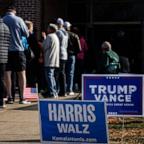
Stakes of a second Trump presidency
What would a second Trump presidency look like? Political observers — including us — have suggested that it wouldn't much resemble the first one, perhaps because the kinds of figures who checked Trump within Congress and his administration largely won't be present. Another important factor is that, even with those guardrails in place, the American presidency is incredibly powerful. Presidents make policy through their personnel selections, not only appointing roles that face Senate confirmation but also choosing a range of other advisors within the White House who will weigh in on major decisions and shape priorities. Trump's first term provides some guidance here — he often selected unconventional figures for these roles who had little relevant experience, or even any seeming commitment to the regulatory missions of the agencies they were tasked to lead.

Another other major factor is the way that Trump has talked about using the executive branch for personal and political purposes. Policymaking is always political, of course, but Trump has suggested that he might use the power of his office to punish critics and political opponents or enrich his allies. This would be different from his first term, but some signs were there, for example, in his efforts to weaponize the justice system during his presidency and undermine its legitimacy afterwards. And there were plenty of complaints about Trump using his office for business gain, such as having government officials, including foreign leaders, stay at Trump properties between 2017 and 2021.
Trump's first term also offers some clues about the direction he might take on immigration policy, as he's promised unprecedented crackdowns on both undocumented immigrants and legal immigration policies. Here, too, personnel is crucial for understanding policy: Stephen Miller, whose nativist views are well-known, was one of the key figures shaping immigration policy during Trump's presidency, and reports suggest Miller would once again play a large role in shaping policy in this area, and in helping install like-minded individuals in a second Trump term.










